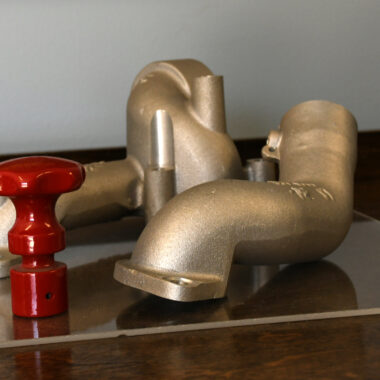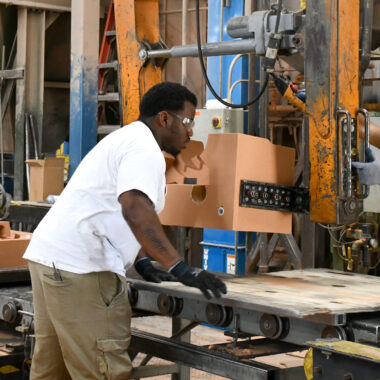Precision in Practice: The Art About Aluminum Casting
Precision in Practice: The Art About Aluminum Casting
Blog Article
Opening the Possible of Light Weight Aluminum Spreading: Proven Approaches for Success
Light weight aluminum spreading has actually long been acknowledged for its versatility and extensive applications across various sectors - about aluminum casting. Nevertheless, uncovering the complete capacity of this process needs greater than simply basic expertise. By carrying out proven approaches refined through years of market experience and innovation, suppliers can raise their light weight aluminum casting operations to brand-new heights of effectiveness and quality. From maximizing design factors to consider to improving manufacturing processes, the vital depend on harnessing these methods effectively. Join us as we discover the vital components that can thrust aluminum spreading towards unmatched success in today's competitive market landscape.
Advantages of Aluminum Casting
One of the primary advantages of light weight aluminum spreading is its light-weight nature, which contributes to fuel efficiency in industries such as automotive and aerospace. Furthermore, aluminum is highly flexible, allowing for intricate and complex shapes to be easily generated with casting processes.
In addition, light weight aluminum casting provides superb rust resistance, making it suitable for applications where exposure to harsh settings is an issue. The material additionally displays excellent thermal conductivity, which is valuable for markets requiring warmth dissipation, such as electronics (about aluminum casting). Furthermore, light weight aluminum is fully recyclable, straightening with the growing focus on sustainable practices in modern-day manufacturing.
Style Considerations for Casting
The layout phase plays a vital function in the total success of an aluminum casting task. One vital consideration is the choice of ideal geometries and features that help with the spreading procedure.
Furthermore, factors to consider connected to parting lines, gating systems, and risers are important to stop issues like porosity and shrinking. It is critical to maximize the design for efficient material usage and reduce post-processing demands. Simulations and prototyping can be useful devices in improving the spreading and reviewing design prior to major manufacturing.
Cooperation in between layout engineers, manufacturers, and foundries is important to deal with any type of prospective difficulties early in the style stage. By integrating these considerations into the casting design procedure, suppliers can boost item top quality, minimize costs, and ultimately open the full potential of light weight aluminum casting.
Enhancing Casting Efficiency
Designing with an emphasis on enhancing product flow and decreasing flaws is important when intending to enhance casting performance in aluminum spreading projects. To attain this, utilizing simulation software application can help in determining possible issues before the spreading procedure begins. By replicating the circulation of molten aluminum, developers can readjust gating and riser designs to weblink guarantee correct filling and solidification, ultimately minimizing the event of defects such as porosity or shrinking.
In addition, implementing appropriate warm therapy procedures can enhance the overall casting effectiveness. Warmth therapy can aid improve the mechanical properties of the aluminum casting, guaranteeing that the last part fulfills the called for requirements. Additionally, employing automation and robotics in the casting process can improve manufacturing, lower hand-operated labor, and increase overall efficiency.
Moreover, continual surveillance and quality assurance straight from the source throughout the spreading procedure are critical for recognizing any kind of inconsistencies and ensuring that the end products meet the wanted criteria. By applying these approaches, manufacturers can enhance casting effectiveness, boost item high quality, and ultimately achieve better success in light weight aluminum spreading jobs.
Quality Control in Light Weight Aluminum Spreading

Effective quality control methods play a crucial role in making sure the accuracy and reliability of aluminum casting procedures. Quality assurance steps in aluminum spreading incorporate a series of activities targeted at promoting details standards and determining variances that can compromise the final product. These methods start with the cautious option and examination of resources to guarantee their high quality and suitability for the spreading procedure. Surveillance and regulating the criteria of the spreading procedure itself, such as pressure, temperature, and cooling rates, are important action in preserving consistency and stability in the final products.
In enhancement to process control, high quality control in light weight aluminum casting includes rigorous testing and examination procedures at different phases of production. By executing durable top quality control practices, light weight aluminum spreading centers can deliver products that satisfy consumer assumptions for performance, high quality, and integrity.
Maximizing Profitability
To achieve optimum monetary performance, a comprehensive approach for optimizing success within aluminum spreading operations must be thoroughly developed and executed. One vital element of making the most of profitability in light weight aluminum casting is maximizing production performance.

Furthermore, diversifying item offerings and discovering brand-new markets can assist broaden income streams. Comprehending customer needs and market trends can guide critical choices to take advantage of arising chances. Purchasing research and growth to introduce products or processes can also drive success with differentiation and customer complete satisfaction.
Verdict
In verdict, aluminum casting supplies many advantages in regards to anchor style adaptability, toughness, and cost-effectiveness. By carefully taking into consideration style factors to consider, improving casting performance, carrying out quality control actions, and optimizing profitability, suppliers can unlock the complete possibility of aluminum spreading. This reliable and flexible procedure has verified to be an effective choice for a large range of industrial applications.
In addition, aluminum is extremely flexible, allowing for intricate and elaborate shapes to be conveniently produced through casting procedures.Reliable quality control practices play an essential duty in making certain the precision and dependability of aluminum spreading procedures.In enhancement to procedure control, top quality control in aluminum casting involves rigorous testing and assessment treatments at numerous phases of manufacturing. By applying durable top quality control practices, aluminum spreading centers can supply items that fulfill consumer assumptions for integrity, top quality, and efficiency.
By meticulously taking into consideration style considerations, improving casting efficiency, implementing top quality control actions, and maximizing productivity, suppliers can open the full potential of light weight aluminum casting.
Report this page